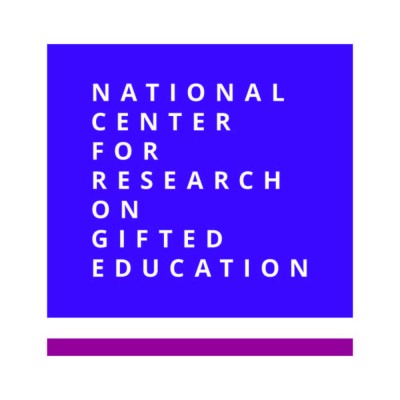Every child has a right to learn something new every day. Unfortunately, for many gifted and talented students this ideal is never realized (Siegle, 2008; 2013). The extent and quality of services available to gifted students varies from state to state and even from school to school within education districts (National Association for Gifted Children & Council of State Directors of Programs for the Gifted, 2013). The reasons for these discrepancies include limited financial resources allotted to educating gifted and talented students (Purcell, 1994), differing definitions of giftedness (Sternberg & Davidson, 2005), perceptions of elitism that foster resistance to providing services to gifted students (Renzulli & Reis, 1997), conflicting opinions about best practices, and limited research on the effectiveness of programs for gifted students (Plucker & Callahan, 2014).
Through research, development, evaluation, and national leadership activities, the National Center for Research on Gifted Education (NCRGE) can provide the research necessary to increase our understanding of identification policies and procedures, instructional approaches, program curricula and content, and stakeholder involvement that contribute to gifted and talented students fulfilling their academic potential. Our emphasis is on understanding effective practices with underserved populations. We network with national organizations and service providers to deliver outreach opportunities and an interactive digital portal for researchers, practitioners, and parents.
For more than a quarter century, the field of gifted education has wrestled with two separate, but related issues: 1) a widespread failure to identify and serve underserved populations and 2) limited data documenting “what works” with gifted students. Failing to answer these questions has resulted in inconsistent and often ineffective programming services for gifted and talented students and the under identification of some populations that result in low performance of underrepresented groups. What results is a condition in which many gifted students’ talents are unrecognized and underdeveloped. Some students have been overlooked and therefore denied opportunities to develop their talents because they were born into poverty, had a certain color of skin, learned to first speak in a language other than English, or lived in a rural or urban area. As Borland (2005) noted, “the practice of gifted education is rife with inequities that have been extremely difficult to eliminate” (p. 11). Such educational inequities have limited these gifted individuals’ opportunities to fulfill their potential. The neglect results in what Plucker, Burroughs, and Song (2010) described as a growing “excellence gap” in K-12 education. Gifted students emerge from all cultures, races, classes, and backgrounds; however, the achievement patterns of these different groups vary widely.
Unfortunately, currently almost half (44%) of low-income students who are classified as high achieving when they enter first grade can no longer be classified as such by the time they reach fifth grade (Wyner, Bridgeland, & Diiulio, 2009). Students from families in the top quartile for socioeconomic status are five times more likely to be in a gifted program than students from families in the bottom quartile (Borland, 2005). High achieving, lower-income students drop out twice as often as high achieving, higher-income students (Wyner et al., 2009). Gifted students of poverty are less likely to attend prestigious colleges, graduate from college, and receive graduate degrees (Wyner et al., 2009). African Americans, Latinos, Native Americans, and English Language Learners (ELL) are severely underrepresented among the top performing 1%, 5%, and 10% of students at all levels of the educational system from kindergarten through graduate and professional school (Miller, 2004). Over two centuries ago, Thomas Jefferson expressed the goal within a system of education “to avail the State of those talents which nature has sown as liberally among the poor as the rich but which perish without use, if not sought for and cultivated.” Nationally, the goal has yet to be met.
A nation’s prosperity can be charted to a large extent by the contributions of its most gifted and talented citizens. When a nation fails to recognized and develop the talents of a large percentage of its population, it limits its ability to compete in the future. Plucker, Hardesty, and Burroughs (2013) suggested that “the failure of the U.S. educational system to properly nurture students from disadvantaged backgrounds may be an important contributor to the low proportion of U.S. students entering science, technology, engineering, and mathematics (STEM) fields” (p. 3). Our nation’s fortune is dependent upon the brightest students in today’s classrooms and the educational opportunities they currently receive. As the renowned educational psychologist Benjamin Bloom discovered almost three decades ago in his research on eminent individuals, “No one reached the limits of learning in a talent field on his or her own….What the families and the teachers do at different times and how they do it clearly sets the stage for exceptional learning in each talent field” (Bloom, 1985, p. 509). Through the research we are conducting, we can identify program components that successfully stimulate advanced academic knowledge and skills with an operative commitment to reaching traditionally underserved students.
